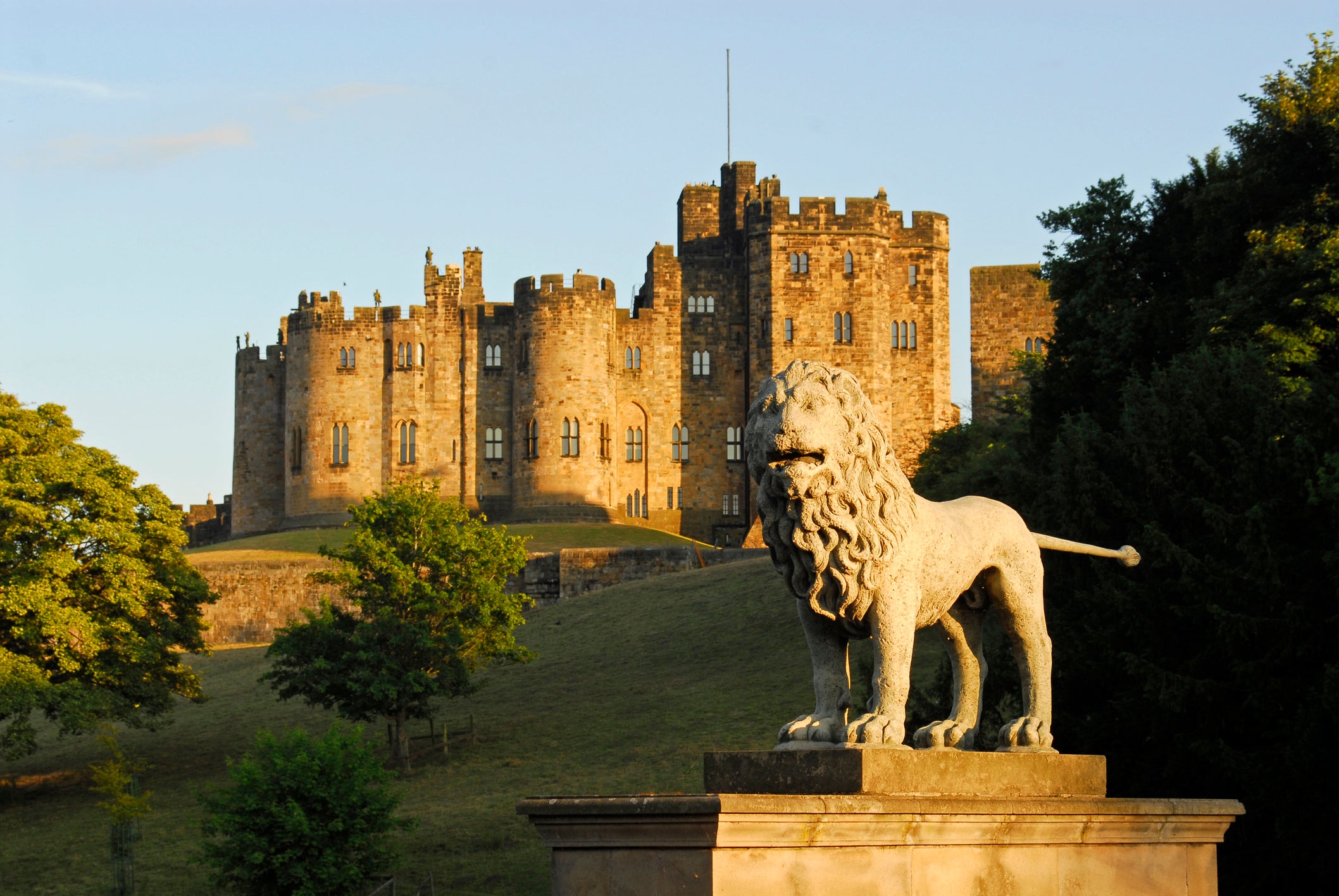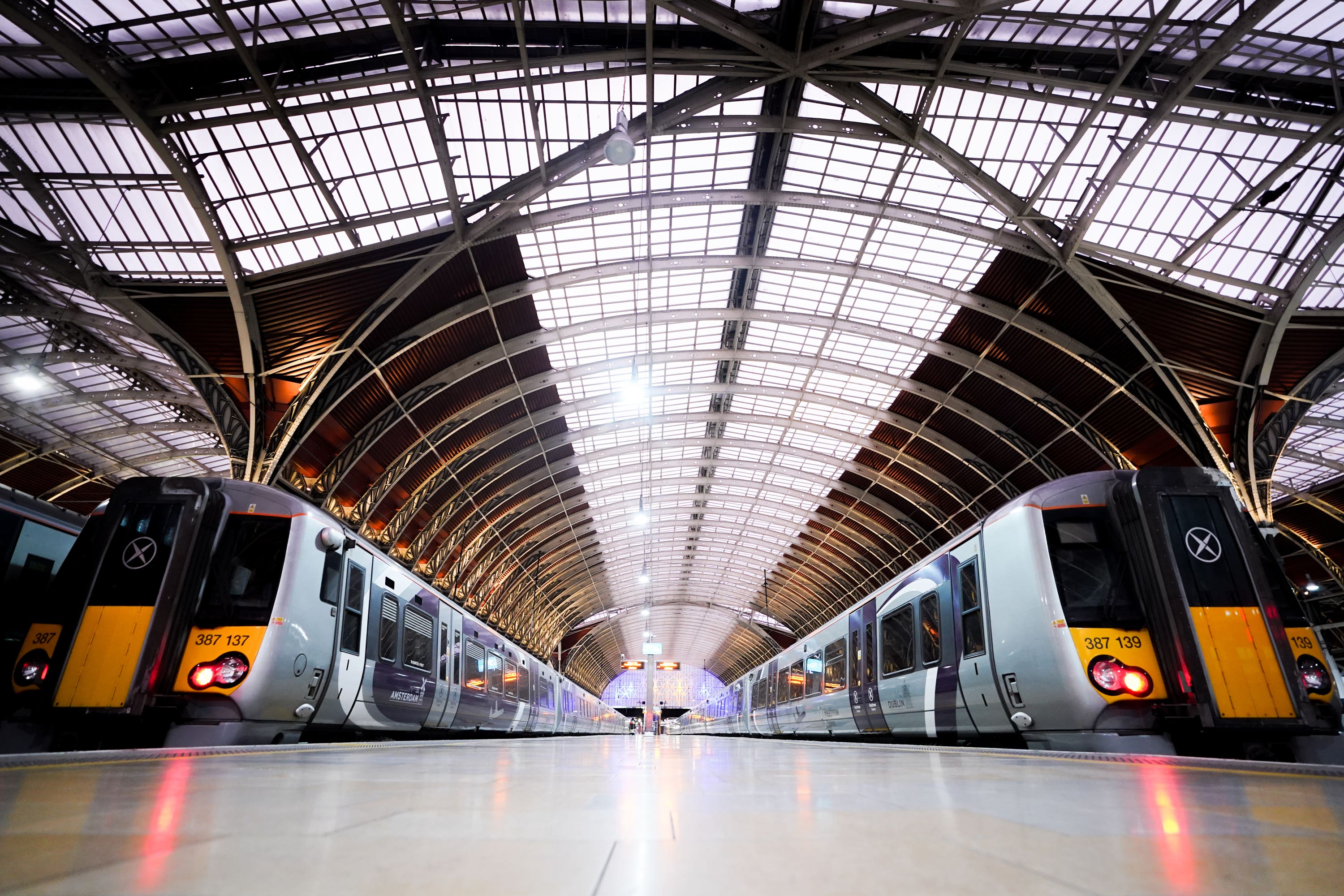What should we do on our trip to Northumberland?
Simon Calder answers your questions on trips up North, ongoing rail strikes, navigating India’s e-visa system, and why flying was so much better in the 1970s


Q Next month my partner and I are driving from Buckinghamshire to Otterburn in Northumberland to attend a wedding. As neither of us knows that part of England, we are planning to spend a few days touring the area and staying in different locations. Do you have any suggestions as to where we should visit and your recommendations for accommodation?
Mike C
A What a fine prospect. Otterburn is almost plumb in the middle of Northumberland, and whether you head north, east, south or west from there you really can’t go wrong. My recommendation is almost a full circuit that will initially take you into Scotland and leave you pointing south on the A1.
The A68 is easily the most scenic of the main roads crossing the Anglo-Scottish border, and you can follow it from just outside Otterburn to St Boswells. Across the River Tweed are the atmospheric remains of Dryburgh Abbey – and, adjacent, the handsome Victorian hotel that shares the abbey’s name.
You can take riverside walks from here or make slightly longer excursions (perhaps borrowing the hotel bicycles) to the pretty town of Melrose and to Abbotsford, the home of Sir Walter Scott. Next, follow the Tweed – pausing at the remarkable 18th-century Floors Castle, the largest inhabited house in Scotland – to its mouth at Berwick. Walking the Elizabethan walls of the border town delivers a series of outstanding views.
See if you can get a room at the Lindisfarne Hotel to stay on the Holy Island; the drive across is tide-dependent, so time it carefully. The ruined priory and Lindisfarne Castle (actually an Edwardian holiday home) are the main attractions.
Further south, consider a boat trip out to the Farne Islands, for an astonishing array of birds and marine life. The former kingdom of Northumbria has plenty of defences. Choose from a trio of castles: Bamburgh, presiding over a resort voted loveliest in Britain; the haunting ruins of Dunstanburgh, right on the shore; and Alnwick, filming location for Harry Potter and Downton Abbey. Finally, pause for a bite to eat in Morpeth, a handsome market town and home of the “Morpeth Rant” (a folk song, not a consumer complaint). And contemplate the journey south towards Newcastle (which is also well worth a day’s visit) and home.

Q What chances of the RMT strikes reaching an agreement before 16 March?
Sean W
A Since June last year, national rail strikes in a tangle of disputes about pay, job security and working arrangements have caused problems for tens of millions of train passengers. The next round of national rail strikes is due to begin on Thursday 16 March, when the main rail union – the RMT has called another walkout of 40,000 members. These staff work for Network Rail and the 14 train operators who are contracted by the Department for Transport (DfT) to run train services. They include the leading intercity operators: Avanti West Coast, CrossCountry, East Midlands Railway, Great Western Railway and LNER.
Crucially, signalling staff working for Network Rail will walk out, reducing the nation’s railway to a rump of some intercity lines and commuter routes. Even in Scotland and Wales, where the national operators – ScotRail and Transport for Wales – are not involved, most trains will be cancelled.
As one of around 20 million people who depend on trains, I have already written off the prospect of the strike being cancelled in time for operators to run a normal service. (In October the RMT called off a series of strikes at very short notice, far too late to restore most services.)
The government, which will ultimately sanction and pay for the eventual settlement, and the union have now dug in for a war of attrition. The pay rise of 5 per cent for 2022 and 4 per cent for this year (with additional increases for lower-paid staff) is acceptable to both sides. But ministers insist it is contingent on the union accepting a wide range of changes to working arrangements and call it their “best and final offers”. Meanwhile, the RMT is demanding “an unconditional pay offer”.
The two sides have actually moved further apart. Rail workers have not a hope of recouping the money they have lost during industrial action, and the government knows that public confidence is being eroded by the unreliability of trains. So it is now a question of who backs down first. The RMT believes eventually the government will relent, while ministers see cracks appearing in the solidarity of the union. Caught in the middle: the long-suffering passenger. So I will be on the bus on 16 March, and I may see you too.

Q Why has air travel become so fraught with difficulties? Fifty years ago travelling by plane was exciting and reliable. Now it seems like an obstacle course.
“Leagle”
A I envy you travelling by air in the 1970s. Fifty years ago I was a teenager. The notion of flying to Europe, let alone any further, was about as remote as the prospect of a trip to the moon. A few friends flew away to the Mediterranean with their (wealthy) parents on package holidays, but the main characteristic of aviation was exclusivity. Normal people travelled abroad by rail or road and sea. Because even that was well beyond my reach, I was instead to be found hitchhiking to various parts of Europe. I can confirm that was fraught with difficulties (some of them self-inflicted as a result of looking extremely unappealing in terms of hairstyle and dress, and smoking hand-rolled cigarettes as drivers passed).
From my time working at Gatwick airport in that decade, though, I can confirm that it was indeed an almost effortless process from train to check-in to plane. The first rudimentary security checks began in the mid-1970s, but unless you were flying to Northern Ireland they were best described as light-touch. Today, thankfully, many of us can afford to fly. And many of us do. The hurdles you mention need to be separated. Some are long lines and crowds due to the sheer pressure of numbers at busy airports; Heathrow handles four or five times as many passengers as it did half a century ago.
The worst part of any journey is generally the security search. Measures from metal detectors to X-rays searching for sharp objects and liquids brought in progressively as a response to murderous acts of terrorism. Yet, in time, those security procedures should be eased and accelerated as technology improves.
I still find flying exciting, and mostly reliable. Two modern virtues that are far more important than any others, though: affordability, and extraordinary levels of safety.
Question via the latest Ask Me Anything at independent.co.uk/travel

Q Any update on visas for holidays to India, please? I’m flying to Mumbai next year to join a cruise, which will also be calling at Goa.
Andy M
A Mumbai is one of my favourite cities: quintessentially human, with a vast and diverse population, intriguing culture and architecture, noise, colour, food and even an impressive beach. I also love Goa: a tiny state, full of interest and beauty. So in principle, I am delighted to learn that you are planning to visit these parts of India.
If you can sense a “but …” coming, I am afraid you are right.
My strong advice to anyone hoping to visit India is that they should not book anything until they have their precious permit to visit. Over the years I have spent many long hours in various Indian visa offices, so the existence of e-visas is a most welcome development (even though the online bureaucracy is still pretty intense).
But being able to obtain an e-visa is far from certain. The Indian government withdrew them as the pandemic began. When they were restored, the UK was notable for its absence from the list of eligible nationalities. The reason: a dispute over British rules for Indian visitors to the UK. For months, UK visitors with trips booked had to try to get a personal appointment at an Indian visa centre – and many people lost their holidays due to the long backlog. Finally, e-visas for British passport holders were reinstated in December 2022.
I very much hope that e-visas for India will still be available by the time your cruise takes place. Meanwhile, I wonder whether you booked your cruise through a travel agent? If you did so, it is their obligation to spell out the red tape involved – and explain the risk that you are taking by paying for a holiday without the certainty of being able to enter India.
Finally, when you apply I recommend that you consider paying extra for a five-year, multiple-entry e-visa. This will allow you to visit India at any time you wish within five years from the visa issue date without any further bureaucracy. And even if your passport runs out in the interim, the Indian High Commission says you can use an e-visa related to an old passport so long as you bring the travel document with you.
Email your questions to s@hols.tv or tweet @simoncalder






Join our commenting forum
Join thought-provoking conversations, follow other Independent readers and see their replies
Comments